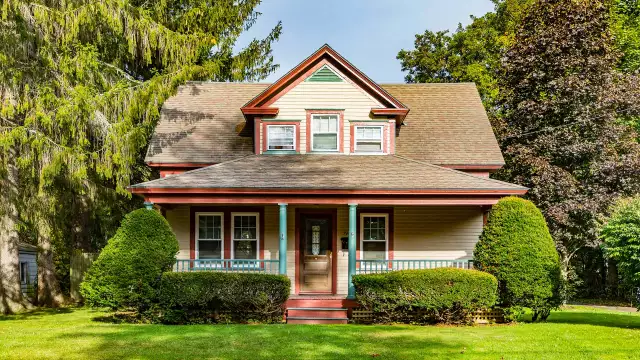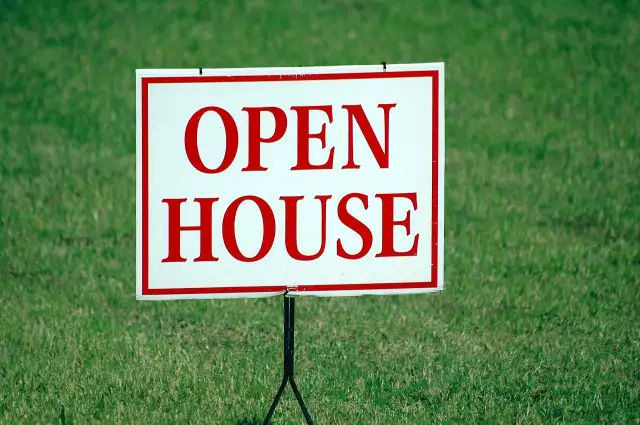How To Prepare To Buy A House In 8 Steps | 2022 Guide
How To Prepare To Buy A House In 8 Steps | 2022 Guide
Preparation is key in today’s housing market
Buying a home is a huge accomplishment, but the housing market is competitive. That’s especially true when it comes to mid-priced, affordable houses.
So how do you get ahead in a hot market? The key is preparation.
It’s the most prepared buyers who have the best chance at beating the competition. Here’s what to do.
In this article (Skip to...)
8 Steps to prepare to buy a house
When you’re preparing to buy a house, the earlier you can get started, the better. Working on your finances in the months prior to buying a house will improve your budget and your mortgage options.
But even if you’re ready to buy now, there are steps you can take that will help you in the home buying process. We explain each step in detail below, but here’s an overview of what you can do to prepare to buy a house, in chronological order:
8 Steps to prepare to buy a house:
Taking these steps will help you be more prepared at every stage of the home buying journey.
How to prepare to buy a house if you’re in the early stages
If you’re a first-time home buyer in the early stages of home shopping, you have a leg up. While you’re visiting open houses you can get your personal finances into shape.
You can get ahead of your credit, debt, and savings — which means you’ll have a bigger home buying budget when you’ve found the right house.
These four steps can help you prepare to buy a house when you’re still getting ready for homeownership:
1. Check your credit
Once you decide to buy a new home, the first thing you’ll need to do is check your credit history. This involves pulling credit reports from each of the three credit reporting bureaus (Experian, TransUnion, and Equifax) to better understand your credit score.
Your credit score determines whether you’re eligible for a mortgage, and it influences your mortgage rate. The higher your score, the lower your rate.
Most mortgage programs require a minimum credit score between 580 and 620.
Ideally, you should check your credit history at least six to 12 months before applying for a mortgage loan. This allows time to improve a low credit score, if necessary.
You should also check your credit reports for accuracy and dispute any errors, especially negative errors that decrease your score.
To get your credit file, contact each of the three bureaus separately, or order all three copies from AnnualCreditReport.com. Normally you’re entitled to one free credit report each year from each of the bureaus. During the pandemic, AnnualCreditReport.com has been allowing one credit report each week from each bureau.
2. Lower your DTI
Your debt-to-income ratio (DTI) shows the percentage of your monthly gross income that goes toward debt repayment. Mortgage lenders use DTI to see how big a house payment you could afford.
Typically, lenders prefer a DTI ratio that’s no higher than 36% to 43%, depending on the mortgage program.
For example, let’s say you have a gross monthly income of $4,000:
Some mortgage lenders allow a higher debt-to-income ratio, but only when a borrower has “compensating factors” such as a high credit score or a large cash reserve. In other words, a strong credit score or a healthy savings account might compensate for a high DTI.
To lower your DTI ratio, pay off as much debt as possible before applying for a mortgage. This includes credit cards, auto loans, student loans, and other loans.
You don’t have to be debt-free to purchase a home, but less debt can increase purchasing power.
3. Save for a down payment
Unless you have VA or USDA loan eligibility, you’ll need to make a down payment. Conventional loans require at least 3% to 5% down, and an FHA loan will need at least 3.5% down.
So if the purchase price for your first home is $300,000, you may need at least $9,000 to $15,000 as a down payment.
You’re also responsible for closing costs — which are roughly 2% to 5% of the loan amount (or $4,000-$10,000 on a $200,000 loan).
When applying for a mortgage loan, your lender will ask for copies of your bank statements to confirm you have enough cash reserves for your down payment and closing costs.
If you don’t have enough cash, some mortgage programs allow borrowers to use gift funds to cover all or a percentage of their mortgage-related expenses.
There are also down payment assistance programs (DPAs) in every state. These offer grants or loans to qualified homebuyers who need help with their down payments. So if you need a little extra help with your out-of-pocket costs, ask your loan officer about local DPAs for which you might qualify.
4. Determine your budget
Before meeting with a mortgage lender, use an online mortgage affordability calculator to estimate how much house you can afford. Once you know what your home purchase price range will be, you can then gauge how much to save for your down payment and closing costs.
For example, if an affordability calculator says you’re likely to afford a $300,000 home, aim to save a minimum of $15,000 for your down payment and perhaps another $6,000 to $9,000 for closing costs.
Mortgage calculators vary. Some estimate your monthly payment based on the home price, down payment amount, interest rate, loan term, and other monthly mortgage expenses like homeowner’s insurance, property taxes, and homeowners association dues.
Other mortgage calculators, however, estimate affordability using the information you provide about your income and current debt payments. But remember that this is only an estimate. You’ll still need to contact a mortgage lender to learn how much you really qualify for.
How to prepare when you’re ready to start house hunting
What if you’ve found your dream home out of the blue, and you feel rushed to buy?
A little preparation will still position you to get the best financing available and make a competitive offer. Here’s what to do.
1. Research loan programs
Even though your lender will discuss different types of mortgages, do your own research before meeting with the loan officer.
Once you’re ready, the home buying process is going to move fast. It can be difficult to digest everything your lender says — and you might not feel like you have enough time to explore all financing options.
If you settle for the first loan you’re offered, you might miss out on lower rates or a more affordable loan program.
So take your time and educate yourself on different types of loans. Think about what you really want in a mortgage. Is it:
All these things are possible. A loan officer can help you find the right match when you know what your priorities are.
Knowledge is the best tool to make an informed decision and choose the best home loan for your situation.
2. Get pre-qualified and/or pre-approved
A mortgage pre-qualification and mortgage pre-approval can jump-start your home buying process. But while both steps sound similar, there are a few differences.
A pre-qualification is a preliminary step where you provide the mortgage lender with basic information about your financial situation via an online form. The lender doesn’t verify this information, but uses it to measure your mortgage eligibility.
The lender might offer you a preliminary approval letter after getting pre-qualified, but it typically doesn’t carry as much weight as a pre-approval letter.
Getting a pre-approval letter involves submitting a mortgage application and providing your lender with supporting documentation. This includes tax returns, paycheck stubs, W2s, financial statements, and a credit check.
The underwriter reviews this information and determines how much you can afford to spend on a property.
A pre-approval letter doesn’t guarantee financing, but it’s a lender’s way of saying they will likely approve you, provided you meet other loan conditions. Plus, it shows your price range.
Most Realtors and sellers will only work with pre-approved buyers, so it’s crucial to take this step before you start seriously house hunting.
3. Find a real estate agent
Buying a home can be a complicated, intimidating process, so you’ll need a professional on your side to answer questions and look out for your best interests.
Don’t rely on the seller’s agent to provide advice and guidance. It’s their job to advise their client, not you.
To find a good real estate agent, get recommendations from friends and family. You should also read online reviews, and interview two or three agents before making a final decision.
In most cases, the seller pays your Realtor’s commission using funds from the home sale. So you don’t have to worry about paying their fees out of pocket.
4. Be ready to make an earnest money deposit
Make sure you have liquid cash for your earnest money deposit. Once you find a property, you’ll need to submit an earnest money check with your offer. This is good faith money that says, “I’m a serious buyer.”
Earnest money deposits vary but typically range from 1% to 2% of the purchase price — usually a minimum of $500 to $1,000.
The seller doesn’t pocket the money, though. Funds are held in an escrow account, and either returned to you at closing or applied to your closing costs and/or down payment.
Other things to know when preparing to buy a house
There are a lot of moving parts in the home buying process. Many buyers, in their excitement about buying a new home, can gloss over some important steps along the way.
Wherever you are in your home buying process, here are some important things to remember:
A home inspection is essential
Unless you’re an expert home builder yourself, you might not notice some serious problems with the home you’re buying.
Maybe the foundation has shifted, or maybe a load-bearing wall has been unwisely moved. Maybe the basement floods twice a year and you happen to be visiting during a dry month. A home inspector can find these and other types of problems for you.
Even when your lender requires the home appraiser to check for minimum building standards, you, or your Realtor, should order your own independent inspector. The results could affect your decisions about whether to buy the home.
Comparing loan offers can save you money
A lot of first-time homebuyers accept the first loan offer they receive, believing all other lenders would offer, more or less, the same deal.
This isn’t true. Even for loan programs run by a government agency, like the Federal Housing Administration, mortgage rates can vary by lender. Getting quotes from at least three lenders can reveal these differences, creating a chance to save.
How much money can you save by getting a rate that’s just a quarter of a percentage point lower? A $300,000 loan with a rate of 6% instead of 6.25% would save about $50 a month and about $18,000 in interest over the life of the loan.
You can learn more about how to shop for mortgage rates here.
You may have to pay mortgage insurance
Unless you put at least 20% down on a conventional loan, you’ll likely need to pay for private mortgage insurance (PMI). This coverage protects the lender in case you default on your mortgage.
FHA and USDA loans charge their own type of mortgage insurance which includes an upfront premium as well as annual premiums which — like PMI — get added to your monthly payment.
These extra charges seem annoying, especially considering the insurance protects the lender and not the buyer. But this coverage also helps the buyer by allowing the lender to offer a lower mortgage rate or lower down payment. If you’re a military member or a veteran, you can avoid mortgage insurance altogether with a VA loan. VA loans charge an upfront funding fee but no ongoing premiums.
How to prepare to buy a house FAQ
The home buying process moves fast, so being prepared is key
Buying a house is a huge decision, so don’t rush it. Some eager buyers act too quickly and end up skipping vital steps such as a home inspection and comparison shopping for mortgage rates.
In a worst-case scenario, you could end up with a fixer-upper when you thought you were buying a turn-key home, or you could spend thousands extra in mortgage interest.
On the flip side, a little savvy can save you tens of thousands over your mortgage term and even boost your home buying budget.






